Vietnamese Buddhism
From Buddha World
Buddhism came to Vietnam in the first century CE. By the end of the second century, Vietnam developed a major Buddhist centre in the region, commonly known as the Luy Lâu centre, now in the Bắc Ninh province, north of the present day Hanoi city. Luy Lâu was the capital of Giao Chỉ, (the former name of Vietnam), and was a popular place visited by many Indian Buddhist missionary monks on their way to China, who were following the sea route from the Indian sub-continent used by Indian traders. A number of Mahayana sutras and the Agamas were translated into Chinese script at that centre, including the Sutra of Forty-Two Chapters and the Anapanasati.
In the next 18 centuries, due to geographical proximity with China, along with being annexed twice by the Chinese, the two countries shared many common features of cultural, philosophical and religious heritage. Vietnamese Buddhism has been greatly influenced by the development of Mahayana Buddhism in China, with the dominant traditions of Ch'an/Zen, Pure Land, Tantra. Theravada Buddhism came to Vietnam through contact with the Khmer Empire.
Theravada
The southern part of present day Vietnam was originally occupied by the Champa (Cham) and the Cambodian (Khmer) people who followed both a syncretic Saiva-Mahayana (see History of Buddhism in Cambodia) Buddhism and Theravada Buddhism. The Đại Việt annexed the land occupied by the Champa during conquests in the 15th century, and by the 18th century had also annexed the southern portion of the Khmer Empire resulting in the current borders of Vietnam. From that time onward, the dominant Đại Việt as well as the Champa, followed the Mahayana tradition while the Khmer continued to practise Theravada. In the 1920s and 1930s, there were a number of movements in Vietnam for the revival and modernisation of Buddhist activities. Together with the re-organisation of Mahayana establishments, there developed a growing interest in Theravadin meditation as well as the Pali Canon. These were then available in French. Among the pioneers who brought Theravada Buddhism to the ethnic Đại Việt was a young veterinary doctor named Le Van Giang. He was born in the South, received higher education in Hanoi, and after graduation, was sent to Phnom Penh, Cambodia, to work for the French government. During that time he became especially interested in Theravada Buddhist practice and in 1940, upon an invitation from a group of lay Buddhists led by Mr. Nguyen Van Hieu, he went back to Vietnam in order to help establish the first Theravada temple for Vietnamese Buddhists, at Go Dua, Thu Duc (now a district of Saigon). The temple was named Buu-Quang (Ratana Ramsyarama). The temple was destroyed by French troops in 1947, and was later rebuilt in 1951. At Buu-Quang temple, together with a group of Vietnamese bhikkhus (monks), who had received training in Cambodia, such as Venerables Thien-Luat, Buu-Chon, Kim-Quang and Gioi-Nghiem, Venerable Ho-Tong began teaching the Dhamma in their native Vietnamese. He also translated many Buddhist materials from the Pali Canon, and Theravada became part of Vietnamese Buddhist activity in the country. In 1949-1950, Venerable Ho-Tong together with Mr Nguyen Van Hieu and supporters built a new temple in Saigon, named Ky-Vien Tu (Jetavana Vihara). This temple became the centre of Theravada activities in Vietnam, which continued to attract increasing interest among the Vietnamese Buddhists. In 1957, the Vietnamese Theravada Buddhist Sangha Congregation (Giao Hoi Tang Gia Nguyen Thuy Viet Nam) was formally established and recognised by the government, and the Theravada Sangha elected Venerable Ho-Tong as its first President, or Sangharaja. From Saigon, the Theravada movement spread to other provinces, and soon, a number of Theravada temples for ethnic Viet Buddhists were established in many areas in the South and Central parts of Vietnam. As of 1997, there were 64 Theravada temples throughout the country, of which 19 were located in Saigon and its viccinity. Besides Buu-Quang and Ky-Vien temples, other well known temples are Buu-Long, Giac-Quang, Tam-Bao (Da-Nang), Thien-Lam and Huyen-Khong (Hue), and the large Sakyamuni Buddha Monument (Thich-Ca Phat Dai) in Vung Tau.
Zen Buddhism
Thiền Buddhism (Thiền Tông) is the Vietnamese name for the school of Zen Buddhism. Thien is ultimately derived from Chan Zong, itself a derivative of the Sanskrit "Dhyāna". According to traditional accounts of Vietnam, in 580, an Indian monk named Vinitaruci (Vietnamese: Tì-ni-đa-lưu-chi) traveled to Vietnam after completing his studies with Sengcan, the third patriarch of Chinese Zen. This, then, would be the first appearance of Vietnamese Zen, or Thien (thiền) Buddhism. The sect that Vinitaruci and his lone Vietnamese disciple founded would become known as the oldest branch of Thien. After a period of obscurity, the Vinitaruci School became one of the most influential Buddhist groups in Vietnam by the 10th century, particularly so under the patriarch Vạn-Hạnh (died 1018). Other early Vietnamese Zen schools included the Vo Ngon Thong (Vô Ngôn Thông), which was associated with the teaching of Mazu, and the Thao Duong (Thảo Đường), which incorporated nianfo chanting techniques; both were founded by Chinese monks. A new school was founded by one of Vietnam's religious kings; this was the Truc Lam (Trúc Lâm) school, which evinced a deep influence from Confucian and Taoist philosophy. Nevertheless, Truc Lam's prestige waned over the following centuries as Confucianism became dominant in the royal court. In the 17th century, a group of Chinese monks led by Nguyen Thieu (Nguyên Thiều) established a vigorous new school, the Lam Te (Lâm Tế), which is the Vietnamese pronunciation of Linji. A more domesticated offshoot of Lam Te, the Lieu Quan (Liễu Quán) school, was founded in the 18th century and has since been the predominant branch of Vietnamese Zen. The most famous practitioner of synchronized Thiền Buddhism in the West is Thích Nhất Hạnh who has authored dozens of books and founded Dharma center Plum Village in France together with his colleague -Bhiksuni and Zen Master- Chan Khong.

























































 Русский
Русский
